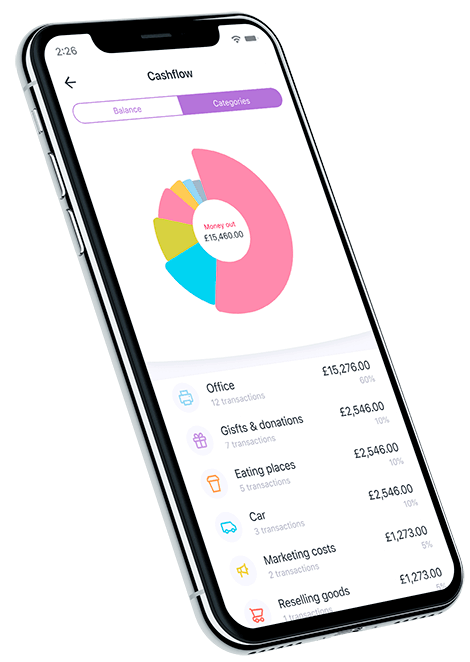Financial Inclusion Matters: Join Our CEO Steve Taklalsingh for a Conversation

Discover the Role of Digital Banking in Promoting Financial Inclusion
Q: "Steve, how does technology bridge gaps for diverse communities today?"
Steve: "I believe that financial services should be accessible to everyone. Unfortunately, many traditional banking systems often exclude a lot of categories of customers. Digital banking is not just about convenience; it's about breaking down barriers and creating opportunities for everyone. By leveraging technology, we can offer solutions that cater to the needs of those often excluded from traditional banking systems.
Q: "Steve, who benefits from Digital Banking?
Steve: "Digital banking promotes financial inclusion for various groups who are typically underserved, including: Low-income individuals, Rural populations, Elderly citizens, People with disabilities, Non-native speakers and Foreign directors and founders".
Q: "Steve, what do you perceive as the major barriers to financial inclusion?"
Steve: "I believe the primary barriers include:
- Physical Disabilities: Individuals with physical disabilities encounter barriers when accessing physical bank locations or utilising financial services that lack accessibility features.
- Language Barriers: Non-native speakers or those with limited proficiency in the dominant language of financial service providers often face difficulties in comprehending and utilising financial products.
- Lack of Financial Literacy: Many individuals lack fundamental financial knowledge, hindering their ability to effectively understand and utilise financial products and services.
- Geographic Barriers: Residents of rural or remote areas often face limited access to physical bank branches, ATMs, and other essential financial infrastructure.
- Income and Economic Barriers: Low-income individuals frequently encounter challenges meeting minimum balance requirements or navigating high fees associated with traditional banking services.
- Legal and Regulatory Barriers: Complex legal and regulatory frameworks can pose significant obstacles, particularly affecting marginalised groups and individuals lacking proper documentation.
- Cultural and Social Barriers: Social norms and practices can deter certain demographic groups from actively engaging with financial services.
- Technological Barriers: Limited access to technology and the internet in underserved areas restricts the adoption of digital banking solutions.
- Lack of Identification Documents: Formal identification requirements for opening bank accounts present challenges for individuals without access to necessary documentation.
- Trust Issues: Prevailing distrust in financial institutions, stemming from past experiences or general skepticism, can discourage individuals from engaging with formal financial services.
- Lack of Credit History: Foreign nationals often struggle to establish local credit histories, limiting their access to loans, credit cards, and other financial products".
Q: "Steve, how can we Address Financial Inclusion?"
Steve: "To support financial inclusion, financial institutions can offer the following solutions:
- Remote Account Opening: Open an account from the comfort of your home with just a few clicks.
- Simple Interfaces: Develop easy-to-navigate interfaces that minimise the need for typing, available across all device types.
- Big Fonts and High Contrast: Consider customisable display settings to aid those with visual impairments.
- Flexible Identification Requirements: Accept a broader range of identification documents, including passports and international driver's licences, to facilitate access to financial services.
- Credit History Portability: Develop systems that recognise international credit histories to help foreign nationals access credit more easily.
- Language Support: Provide multilingual support and translated materials to ensure non-native speakers can fully understand and utilise financial services.
- Tailored Financial Products: Create financial products designed specifically for the needs of foreign nationals, such as international business accounts and cross-border payment solutions.
- Educational Resources: Offer resources and workshops to help foreign directors and founders understand the local financial system and navigate regulatory requirements".
Q: "Steve, can you share some examples of successful financial inclusion initiatives in the market?"
Steve: "There are several notable examples of financial inclusion, such as:
Microloans: Offering small loans to low-income individuals to start or expand their businesses.
Mobile Banking Services: Providing banking services to rural areas where traditional banks are not available.
Accessible ATMs: Implementing ATMs with features like braille and audio assistance for visually impaired users.
Financial Literacy Programs: Educating underserved communities about managing finances effectively.
Financial inclusion is more than a goal; it's a necessity. And I would like to ask our audience which barrier to financial inclusion resonates most with you, and what solutions do you think could effectively address it?
Together, we can work towards making our world more inclusive".
#Amaiz #banking #FinancialInclusion #DigitalBanking #InclusiveFinance #OnlineBanking #B2B #BankingSolutions #BusinessBanking #BankAccounts #VirtualCards #IBAN

Download now!
And you can open a business account with all the support you need in minutes.



